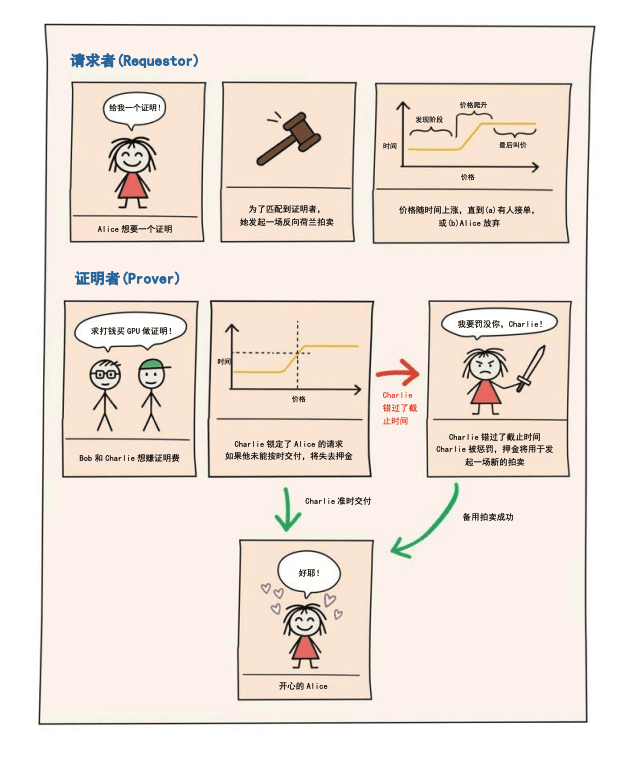@Boundless The protocol is a pioneering solution for the decentralized zero-knowledge proof (ZKP) market, providing a new paradigm for blockchain scalability and efficient utilization of computing resources through innovative technical architecture, economic model design, and the reshaping of the decentralized computing ecosystem. This article will conduct an in-depth analysis from three dimensions: technical architecture, economic model innovation, and ecological significance.
1. Breakthroughs in Technical Architecture
Modular Cross-Chain Design @Boundless adopts a smart contract cluster deployment model, compatible with Ethereum and EVM ecological chains, ensuring decentralized security and cross-chain interoperability.
The off-chain proof network consists of distributed GPU/general hardware nodes, achieving standardized proof generation through RISC Zero's zkVM, making ZK computation a programmable and verifiable general resource.
Core Component Innovation Verifiable Proof of Work (PoVW): A cycle counting mechanism based on zkVM that accurately quantifies the computational cost of proof generation, prevents fraud and spam requests, while providing an objective basis for token incentives.
Dynamic Auction Mechanism: A reverse Dutch auction model is adopted, automatically adjusting market supply and demand through a price function, supporting instantaneous settlement and request locking dual modes, balancing efficiency and flexibility.
2. Economic Model Innovation
Dual-track Market Mechanism Spot Market: Achieving instantaneous ZK proof transactions through dynamic pricing to meet short-term demand.
Service Agreement Market: Supports long-term capacity pre-sales, fractional trading, and SLA guarantees, forming a derivative financial ecosystem for computing resources, reducing the uncertainty of protocol operations.
Token Economic Closed Loop $ZKC Token: Serving as an ecological governance and incentive medium, new minted tokens are distributed through PoVW rewards, while capturing cross-chain transaction fee value.
Vault Mechanism: Token staking generates points, used for fee sharing and governance rights enhancement, forming a positive cycle of staking-revenue-governance.
3. Ecological Significance and Industry Impact
Supply-side Revolution: Reducing the threshold for ZK proof generation, allowing consumer-grade hardware and open-source software to participate, breaking the technical monopoly of professional teams and promoting the formation of distributed computing networks.
Optimizing computing power resource allocation through market mechanisms to avoid trust dependency issues of centralized cloud services.
Demand-side Empowerment: Providing dApps with a composable computing layer, breaking through on-chain execution gas limits, making complex smart contracts and privacy computations possible.
The financialization design of the service agreement makes computing resources hedgeable and tradable, improving capital efficiency and protocol stability.
Industry Paradigm Shift: The launch of Boundless marks the transition of ZK technology from the laboratory to large-scale application, providing underlying support for verifiable computation as a service (VCaaS) for Web3 infrastructure.
In the future, it may integrate deeply with modular blockchains, data availability layers, and DeFi protocols, further promoting the popularization of decentralized computing.
@Boundless The proposal, through innovative design of the technical architecture, efficient incentives of the economic model, and the reshaping of the decentralized computing ecosystem, provides a feasible path for the large-scale application of ZK proofs. With the continuous optimization of zkVM performance and the popularization of hardware acceleration, Boundless is expected to become the core component of the next generation blockchain infrastructure, ultimately realizing the vision of 'democratizing verifiable computation.'
Gberry🍓


